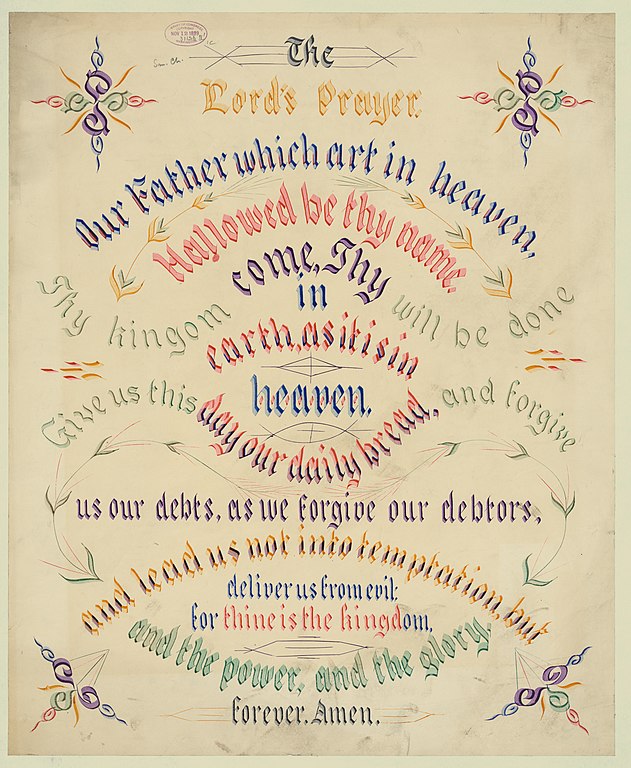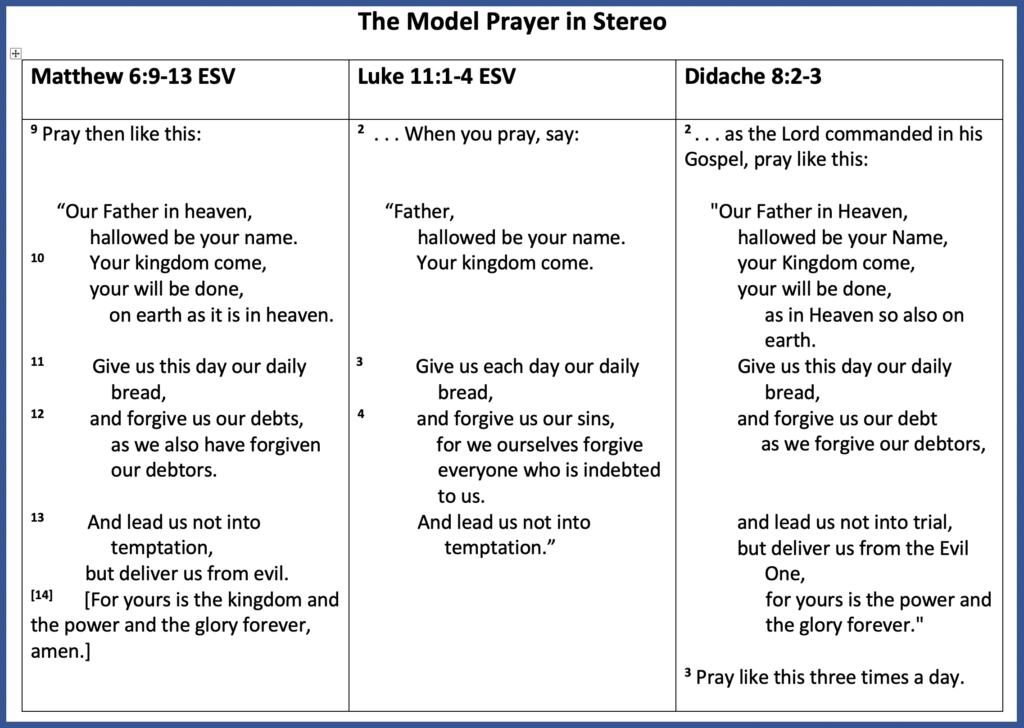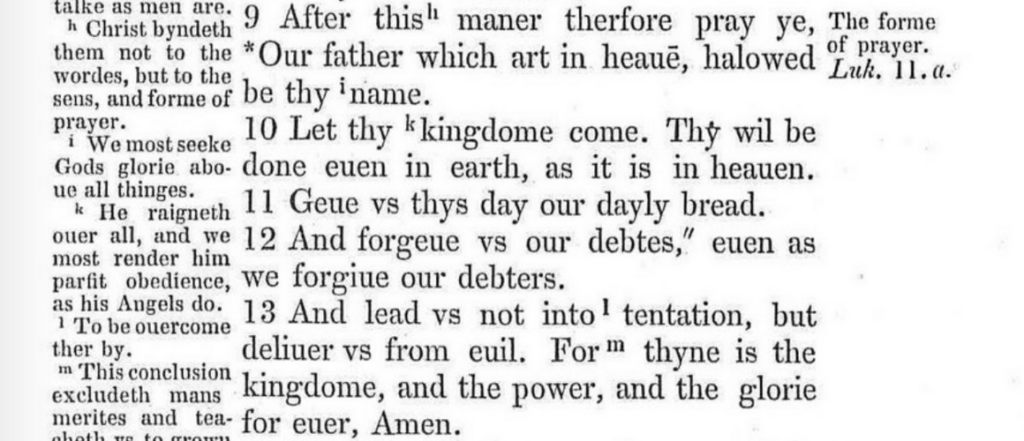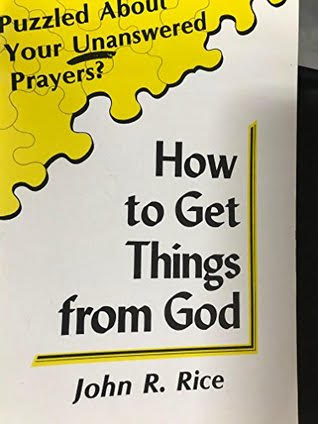
Our previous study engaged Matthew 6:1-18, the setting of the Lord’s Prayer. Now we focus on the prayer itself. High-church folks know it as the Our Father. With many protestants, I’ll refer to it as the model prayer. Some say it’s more of a disciples’ prayer than the Lord’s prayer, but Jesus likely prayed like this too. Some churches recite it every Sunday as part of their order of service, especially before the Eucharist. The Didache (an ancient Christian instruction manual from the early second century) advised readers to pray it three times a day (8:3). That may be good advice, but we should realize this prayer is not magic—it’s not a mantra that mystically draws us nearer to God or an incantation that convinces God to meet our needs.
The prayer is one of those passages of Scripture where the old saying familiarity breeds contempt is applicable. Not that we would actually hold the Bible in contempt, but we do tend to react with a nonchalant “ho-hum” to well-known texts. We think we already know all about such texts, but our current issues and experiences always sensitize us to see “new” things that have been there all along! We can always use a reminder that centers our prayer-lives on what really matters for eternity.
How do your typical prayers stack up next to Jesus’ model prayer?
The Tradition of the Prayer

The model prayer is energized by the recent arrival of the Kingdom of God, proclaimed in Jesus’ teaching and demonstrated by his powerful deeds (Matt 4:17-25). The blessed followers of Jesus who hunger and thirst for God’s righteousness to be established on earth (Matt 5:6) pray as the model prayer enjoins. The prayer also reflects the values of its Jewish setting. The Old Testament calls on Israel’s leaders to manifest on earth the justice and righteousness that characterize God’s heavenly reign (e.g. 1 Kgs 10:9; Ps 45:6-7; 72:1-2; 89:14; Jer 9:24; 22:3; Ezek 45:9). Jesus’ emphasis on hallowing God’s name (holding God in highest honor and respect) is consistent with this prior OT tradition and with the subsequent Rabbinical tradition. The Kaddish prayer of the Babylonian Talmud (Yebamoth 79a; Sotah 49a) begins with words that ask for God’s reputation to grow. A contemporary translation of the prayer begins this way:
Glorified and sanctified be God’s great name throughout the world which He has created according to His will.
May He establish His kingdom in your lifetime and during your days, and within the life of the entire House of Israel, speedily and soon.
Matthew’s portrayal of the model prayer differs from Luke’s in both context and content. This may be due to the editorial work of the two authors in depicting one historic teaching of Jesus, or it may be because Matthew and Luke portray two different incidents. In Matthew the prayer is part of the Sermon on the Mount, while in Like it is a response to Jesus’ disciples asking him to teach them to pray, as John taught his disciples. As you can see in the Table above, Luke’s version is shorter and simpler than Matthew’s (e.g. compare Matt 6:9-10 to Luke 6:2).
The early Christian instruction manual known as the Didache (c. 100 CE) presents the Prayer in a manner very much like Matthew’s. Notably, the Didache enjoins that Christians pray the prayer three times a day, despite introducing it with Jesus’ words “pray like this.”
Why Bibles Differ on Matthew 6:13

You may have noticed that some Bibles (e.g. KJV and NKJV) have longer versions of Matthew 6:13. Why is this? Early protestant translations used the Greek NT text that was available to them in their day, edited by the Roman Catholic scholar Erasmus in 1516. This has come to be known as the Textus Receptus. This Greek NT was based on relatively few late Greek manuscripts. These manuscripts include the doxology translated into English as “yours is the kingdom and the power and the glory forever, amen.” at the end of Matt 6:13. This longer reading of Matthew 6;13 was used in early protestant Bibles such as the Geneva Bible (NT 1557, complete Bible 1560) and the King James Version (1611).
As more NT manuscripts were discovered, it became clear that the more ancient ones did not have the doxology in Matthew 6:13. Accordingly, more recent English translations omit the long reading, beginning with the English Revised Version (1881) and the American Standard Bible (1901). You will note that the NEB, RSV, ESV, NIV, NLT, and other 20th and 21st century protestant translations do not include the longer reading of Matt 6:13. Even though that is the case, you still hear the long reading in church liturgies today.
Apparently the long reading was added to Matt 6:13 as the conclusion of the Lord’s prayer in early liturgies going back as far as the Didache. Gradually the longer reading with the doxology became accepted as the correct reading in some ancient manuscripts. It’s similar to the prayer of David in 1 Chronicles 29:11, and it’s a fitting conclusion to the Lord’s prayer. Yet it tends to separate the warning of Matt 6:14-15 from 6:12, which reminds us that being forgiven our sins requires us to forgive others.
The Flow of the Prayer
Here’s a brief analysis of how the prayer fits together:
- The person to whom we pray (6:9): God is Father (familial, relational imagery). God is our Father (graciously near us through Jesus). God is our heavenly Father (gloriously transcendent over us).
The high and lofty One who lives in eternity, the holy One says this:
I live in the high and holy place with those whose spirits are contrite and humble.
I restore the crushed spirit of the humble
and revive the courage of those with repentant hearts.
Isaiah 57:15 NLT
- The priority in our prayers (6:9-10). There are three “your-requests” regarding God’s name, kingdom, and will. These three requests express essentially the same idea, that God’s reign will be recognized on earth as it is in heaven. Some take this only as a reference to Christ’s return, but it includes both the partial present and ultimate future realization of God’s reign.
- The problems we should pray about (6:11-13). There are three “our-requests” (four if we split up the two parts of the 3rd request). We are encouraged by our loving Father to pray for daily sustenance, for forgiveness, and for the avoidance of sin.
- The prerequisite for approaching God in prayer (6:14-15). Although Matt 6:14-15 is not part of the prayer itself, these verses show us what is needed to approach God in prayer. Experiencing the forgiving grace of God enables us to extend forgiveness to others. As Paul taught in Ephesians 4:31-5:2, we forgive others as God in Christ has forgiven us. Those who receive forgiveness are enabled to extend it to others, mimicking the heavenly Father’s action in Christ. This is a matter of family resemblance: “Blessed are the peacemakers, for they will be called the children of God.” (Matt 5:9)
- In summary, the prayer requests begin with God’s glory—his name, kingdom, and will (6:9-10), and flow into our need for sustenance, forgiveness for past sin, and avoidance of future sin (6:12-13). There are three requests for God’s glory (the “your requests”), three for human needs (the “our requests”), and finally an explanation for the prayer for forgiveness (6:14-15) which ties our own forgiveness to our willingness to forgive others.
Some Take-aways

- The prayer begins not with petitions for human needs (“God, gimmee this now!”) but with God-centered petitions. This teaches us that prayer is primarily a matter of God receiving our worship, not our receiving God’s “answers.” Prayer is not primarily about us because God knows what we need before we ask.
- Jesus addresses God as our (not my) Father in heaven, teaching us that we should not pray individualistically but as members of a community. We pray to a God who relates to us as his family (Father) from his exalted state of being (in heaven). Our high and lofty God relates to us as a loving Father to restore us to fellowship with himself. God is high above us in heaven but he is delighted when his frail earthly children worship him and ask for their needs to be met.
- Unfortunately, our typical prayers are more like Peter’s “Lord, save me! (Matt 14:30) than Jesus’ model prayer for his disciples. Peter’s prayer was fitting for his unique emergency, but not for our daily walk with God.
- Prayer is primarily the worship of God, flowing out of our experience of his grace in Christ and joining his family. Prayer is not a transaction or a technique we use to get stuff from God. Our heavenly Father delights in meeting our needs, but he requires us first to focus on his glory and the fulfillment of his reign.
- We should not pray in an escapist manner—”Beam me up Jesus, get me outa here!” God’s ultimate plan for the future is not for us to go to heaven but for heaven to come to earth. The gospel song says “this world is not my home,” but the last two chapters of the Bible say that the world renewed by the power of Christ is our home.
- The second century teacher Tertullian thought our personal requests should be made in memory of the Lord’s requests, and pictured our personal prayers as a building erected on the foundation of the Lord’s prayer:
Since the Lord, who foresees human necessities, after delivering His Rule of Prayer, said “
Ask, and you shall receive,”and since there are petitions which are made according to the circumstances of each individual, our additional wants have the right—after beginning with the legitimate and customary prayers as a foundation, as it were—of rearing an outer superstructure of petitions, yet with remembrance of the Master’s precepts. Tertullian, On Prayer 10
• • • • • • •
When you pray, don’t be like the hypocrites who love to pray publicly on street corners and in the synagogues where everyone can see them. I tell you the truth, that is all the reward they will ever get. But when you pray, go away by yourself, shut the door behind you, and pray to your Father in private. Then your Father, who sees everything, will reward you.
When you pray, don’t babble on and on as the Gentiles do. They think their prayers are answered merely by repeating their words again and again. Don’t be like them, for your Father knows exactly what you need even before you ask him! Pray like this . . . (Matt 6:5-9a NLT)
• • • • • • •
Check out the Previous Posts in our Sermon on the Mount Series:
Well done as usual.
Do you think that the first three requests were placed there to counter our selfish natures?
Thanks, and yes, prayer of all things has to be centered on God, not us.
David
Interesting reflections on the Lord’s prayer. When I was a child, my father would recite it before every dinner, so it became too familiar. Now I seldom think about it, though it is a great model for talking with the Father. I was fascinated by the changes or simplification that occurred as earlier manuscripts were available.
That’s a great heritage. Sorry that familiarity with the prayer had a down-side for you, but that’s what I was talking about at the beginning of the post.
Very enlightening!
Prayer primarily is God’s worship!
Very enlightening!
Prayer is primarily the worship of God!